Life style
From ‘nobody’s child’ to somebody’s child
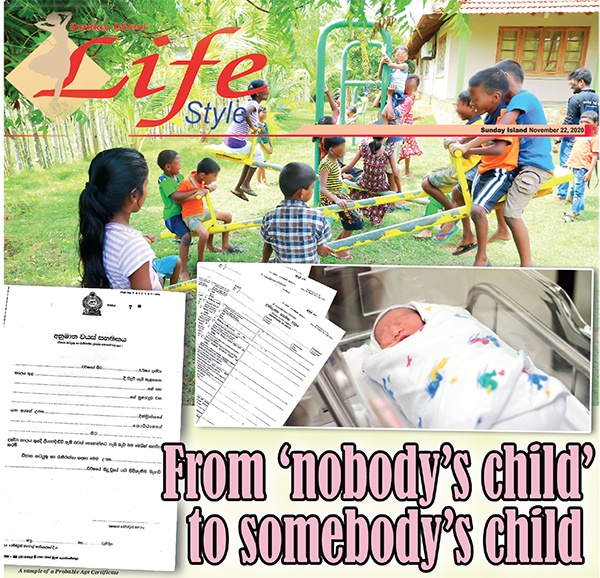
‘The Probable Age Certificate’ (PAC) issued to children without a birth certificate for lack of key information required for its issue often means discrimination and social stigma despite the PAC’s legal validity. In a bid to renew discussion on this social dilemma and find more socially acceptable alternatives at policy-making level, we spoke to multiple stakeholders including those who had left care homes and have been at the receiving end of the consequences.
by Randima Attygalle
Dhanushka Kumara Jayaratne was rejected by several leading schools when seeking Grade One admission on the grounds of his holding a ‘Probable Age Certificate’ as opposed to a Birth Certificate. When he was finally admitted to a school, he was shut out of cultural events and sport competitions at various levels on the basis that he had no ‘proper birth certificate’. When applying for his national identity card and travel visas on several occasions, bottlenecks were many. One of the main problems was that the probable age certificate (PAC) did not specify any guardian in the absence of names of parents.
 Today a 31-year-old executive, Dhanushka gives leadership to the ‘Generation Never Give up Network’ (GNGN), an initiative of the SOS Children’s Villages, Sri Lanka which advocates the causes of care leavers (children leaving child care institutions at 18 years). Lobbying for a more socially acceptable form of a birth certificate in place of the PAC is one of the top priorities of this collective.
Today a 31-year-old executive, Dhanushka gives leadership to the ‘Generation Never Give up Network’ (GNGN), an initiative of the SOS Children’s Villages, Sri Lanka which advocates the causes of care leavers (children leaving child care institutions at 18 years). Lobbying for a more socially acceptable form of a birth certificate in place of the PAC is one of the top priorities of this collective.
“PAC often leads to discrimination and stigmatization due to its format,” observes this young man pushing for a more ‘dignified’ birth certificate with ‘better terminology’ and provisions for ‘guardians’ that could either be an individual or a child care institute. “The issue was taken up by the Parliamentary Sectoral Oversight Committee on Women and Children a couple of years ago and was discussed for a while but unfortunately no solution was tabled,” notes Danushka who hopes to renew the dialogue among relevant partners through the GNGN initiative.
“The probable age certificate of mine is nothing but a piece of paper with some dotted lines claiming that I was born within such a time frame. It is very humiliating to produce this piece of paper for government exams, employment etc,” says Nirmala Niroshini. Recollecting the emotionally traumatizing moments when she was viewed almost as an ‘abnormal’ individual on the basis of her PAC, Nirmala urges the authorities to revise its present format and enable a more acceptable document. She also proposes that an endorsement on the PAC by the Registrar General’s Department to make it as good as a normal birth certificate for official purposes. “It was an uphill task for me to get my NIC. I had to submit so many supporting documents verifying the legality of my PAC to convince the authorities. Finding employment was another battle,” says Nirmala, who is today employed as a clerical staffer at a dental clinic.
Current regulations
The Registrar General’s Department makes provisions to obtain a PAC for children who are in homes approved by the government, children who are not in such homes and even adults. Statistics on the exact number of children presently holding PACs in the country however remain unclear.
The PAC is issued to individuals (children as well as adults) who cannot be granted a ‘birth certificate’ due to lack of key information required for the latter. “This includes the absence of an exact date of birth or even the mother’s name. To issue a birth certificate, an informant is required and if the informant (who is often an authority from a child care institute in case of children under 14 years) cannot furnish the information required, providing a birth certificate would become difficult,” admits the Senior Deputy Registrar General G.A.L.D. Ganepola.
The Establishment Code and the Public Administration Circular 26/1995 provide for the acceptance of the PAC. The Public Administration Circular 26/1995 states that PAC ‘is acceptable for the purpose of confirmation of name and date of birth of persons.’
“Probable age certificate is a legitimate legal document which should be accepted by all agencies although in reality it doesn’t happen largely due to ignorance of the regulations,” notes Ganepola. Increased public awareness on this matter with wide media coverage is necessary for this, says the official. A unique ID number at birth is another alternative proposed by the Senior Deputy Registrar General which could be used for all administrative purposes including school admission, admission into children’s homes etc.
Social stigma
Despite the law recognizing all individuals to be treated equally regardless of any complications pertaining to their birth, children with the PAC are discriminated and stigmatized from all directions in society when they sit for government exams, apply for jobs, universitiy admission, competitive sports and government benefits, says Divakar Ratnadurai, National Director, SOS Children’s Villages Sri Lanka.
Out of 900 children currently living in SOS villages, around 300 have PACs. Also, many who have left the homes are similarly burdened. Lobbying for the reintroduction of the Extract (a shorter version of the birth certificate) with certain modifications enabling practical options where the required information is not available is a possible solution says Ratnadurai. This Extract which was once available was discontinued in the 1970s.
Constraints in obtaining basic information of destitute children is another bottleneck which has led to certain children receiving the PAC instead of a birth certificate, he points out. “Sometimes children are enrolled in care homes without basic information and care givers are faced with difficulties searching for this information.”
Ratnadurai proposes several measures to raise awareness among multiple stakeholders including school authorities to eliminate discrimination. Establishing a special unit in the Department of Probation and Child Care Services to provide continuous awareness on the PAC; lobbying policy makers and administrators for the ‘Extract’ to be given legal recognition etc. are among the correctional proposals made to make life easier for those carrying this burden.
Sensitizing stakeholders
Proposing a probable ‘birth’ certificate replacing the present probable age certificate, Commissioner, Department of Probation and Child Care Services, Chandima Sigera calls for sensitizing the stakeholders at every level including education authorities, other government officials, private sector and the community at large on this issue. In the best interest of children moving for a more socially acceptable form of identity which wouild eliminate dicrimination is urgent says the Commissioner who alludes to the fundamental rights of ‘non discrimination’ and and ‘best interest’ of children upheld in the United Nations Convention on the Rights of the Child.
Determining the age of a child
The current regulations require for a medical certificate estimating the age of the child (probable age) to be submitted to the Registrar General’s Department to obtain a probable age certificate. This is issued by a JMO who collaborates with other specialists.
“In estimating the age of a child, factors such as development of teeth and bones are taken into account. If there is any other medical evidence such as a diagnosis card, we take it into consideration as well,” explains the Consultant JMO, Dr. Uthpala Attygalle. Once the probable time frame of birth is established, the applicant’s date of birth is recorded either as January 1 or July 1, depending on each case.
A vicious cycle
Care leavers sadly become victims of a vicious cycle points out Prabodhini Munasinghe Wickrematunga, Attorney-at-Law with special interest in gender issues. “When women are unable to care for them, children are abandoned. Often the mother is unable to reveal the identity of the father because the pregnancy is a result of rape, sometimes by a relative.
Most employers know nothing about PACs making it difficult for their holders to find decent work and sometimes out of sheer desperation are driven to prostitution. This vulnerability exposes them to risks both in terms of health and security.
Uncertain identity arising as a result of not having a birth certificate which is regarded as an essential document can lead to many negative emotions, explains Dr. Neil Fernando, Consultant Psychiatrist and Senior Lecturer from the Kotelawala Defence University. “Uncertainty frequently brings with it unpredictability which reduces the mental well being and frequently acts as a stress factor. Long term stress is a predisposing factor in causing many non-communicable diseases which include heart disease and diabetes,” he said. Feelings of alienation from the community can lead to social isolation and depression, he added.
- News Advertiesment
See Kapruka’s top selling online shopping categories such as Toys, Grocery, Flowers, Birthday Cakes, Fruits, Chocolates, Clothing and Electronics. Also see Kapruka’s unique online services such as Money Remittence,News, Courier/Delivery, Food Delivery and over 700 top brands. Also get products from Amazon & Ebay via Kapruka Gloabal Shop into Sri Lanka.
Life style
LUXASIA aims to lead luxury beauty’s growth in Sri Lanka
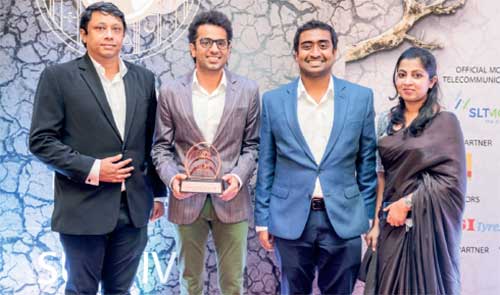
Sri Lanka is a land renown for stunning natural beauty. Yet, LUXASIA still managed to usher in a different kind of beautiful to the market through its expertise in luxury beauty retail and omni-distribution.
In November 2019, LUXASIA unveiled its inaugural classy beauty counters at Odel, One Galle Face. Since then, it has brought enchanting fragrances from luxury brands such as Burberry, Calvin Klein, Gucci, and Marc Jacobs, as well as trendy skincare from KORA Organics to beauty-lovers in an exquisite and captivating retail format.
Now, having successfully overcome the challenges in 2020 imposed by COVID-19 and related lockdowns, LUXASIA is ready and excited to thrill Sri Lankan consumers again. This time, it is with the launch of both skincare and make-up collections from the prestigious Japanese beauty brand, Shiseido. Arriving with a glamorously magnificent pop-up at One Galle Face from 8 to 14 February 2020, LUXASIA promises to bring memorable consumer experiences and a feast for the eyes that showcases the best in Japanese beauty.
Leading up to this pop-up, LUXASIA partnered the Key Opinion Leaders (KOLs) and top influencers of Sri Lanka to excite the beauty community with a sneak peek of what Shiseido have to offer. This campaign garnered more than 100,000 social interactions, with over 1.2 million social media impressions, piquing consumers’ fascination in Shiseido’s award-winning and best-selling serum, The Ultimune Power Infusing Concentrate.
Looking ahead into 2021, LUXASIA aims to continue delighting consumers with even more fresh retail innovations to spice up the luxury beauty scene in Sri Lanka. Soon, fragrance enthusiasts can expect a unique pop-up of all the scents that Luxasia carry, featuring new launches from Davidoff and Calvin Klein, as well as other interesting novelties. Beauty-lovers can also expect more limited edition products and gifts-with-purchases, interesting workshops, as well as seasonal offerings in the coming months. Concurrently, LUXASIA also aspires to continue grooming the Sri Lankan beauty community through more entertaining collaborations with KOLs throughout 2021.
LUXASIA sees immense potential in Sri Lanka’s fast-growing beauty market and has been its voice in the international beauty industry. For some time now, LUXASIA has been relentlessly reaching out to numerous luxury beauty brands across to world to interest them in Sri Lanka. While it is encouraging to see the first-fruits, LUXASIA is aiming much higher. Forging ahead, LUXASIA strives to champion and lead the growth of luxury beauty in Sri Lanka, through even more partnerships with great brands, and by continuously delighting consumers.
Life style
Newly published guide opens many windows on whale watching
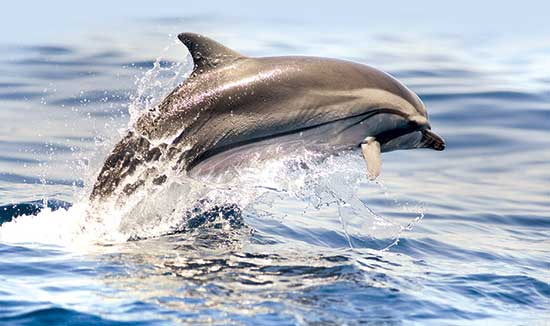
by Ifham Nizam
Shipping lanes to the south of Dondra pose the threat of ships colliding with whales as the area has very rich marine life which also attracts whale watching boats, says prolific wildlife writer and photographer Gehan de Silva Wijeyeratne, author of the recently published ‘A Naturalist’s Guide to the Mammals of Sri Lanka’.
He says international shipping industry organizations have written to the government to push back the existing shipping lanes and if no action is initiated, there is the danger of whale watching boats colliding with vessels.
Dr. Susannah Calderon and her colleagues at the University of Ruhuna have recommended the shipping lanes be moved 15 nautical miles south. The cost impact to all concerned will be negligible, but it significantly improves safety at sea, especially at night when the sea is dotted with the lamps from hundreds of small fishing crafts in the path of giant container carriers.
“It is primarily a safety issue though an important secondary impact will be that it reduces fatal collisions with whales, while generating favourable publicity for the government of Sri Lanka. It boils down to moving the shipping lanes further south and saving lives, Wijeyeratne stressed in an interview with The Sunday Island.
Asked what’s special about his latest publication, he said: “This is the first photographic field guide which covers nearly all of the mammals found in Sri Lanka. It covers 96 per cent of the land and marine mammals. The book, which is portable and affordable, also contains a large number of images from 40 photographers which are practically useful in the field to identify 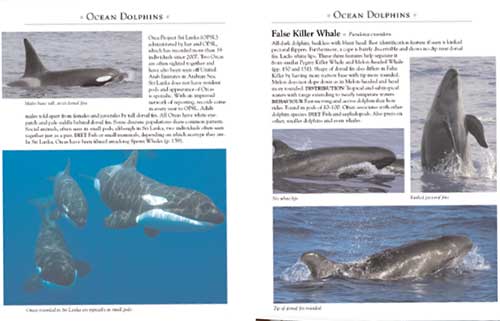 a mammal to species level. It also covers a number of small, discrete, nocturnal mammals whose existence that even many local wildlife enthusiasts will not be aware of.”
a mammal to species level. It also covers a number of small, discrete, nocturnal mammals whose existence that even many local wildlife enthusiasts will not be aware of.”
On the book’s coverage of the marine mammals, Wijeyeratne said there are two noteworthy aspects. Firstly, it covers all the species recorded in Sri Lankan waters expect for one, the Omura’s Whale. This will be included in a second edition. Secondly, it uses images of the whales and dolphins (cetaceans) which will show the animals the way a whale watcher will see them on the surface.
Artwork that shows the whole animal is important, but in field conditions, they are often of limited value to identify cetaceans which only show a little of their upper body in sections at a time they surface.
Q: You were the first to publicize that Sri Lanka was the best location for Blue Whale sightings and offered the best chance to see a superpod of Sperm Whales. Can you explain briefly how you set about branding Sri Lanka as a top international destination for whale watching?
A:
I started with field work to ascertain the facts and launched a media campaign initially with Jetwing Eco Holidays and Jetwing Hotels which was supported over many years by the Sri Lanka Tourism Promotion Bureau (SLTPB) and others in the media and tourism business. I have published 37 articles on whale watching in Sri Lanka. The first, in May 2008, was pivotal as it boldly stated that Sri Lanka was best for Blue Whales. This set everything in motion. My articles give due credit to many people who were a part of this amazing story. This includes Dr. Charles Anderson who first told me it would be feasible to see Blue Whales from the South.
A Belgian millionaire philanthropist who prefers to remain anonymous and helped create the infrastructure for whale watching by 13 tsunami affected fishing youth who set up Mirissa Water Sports and Sue Evans who was important for connecting all of us and Anoma Alagiyawadu (the Jetwing Lighthouse Naturalist) whom I tasked with collecting the initial data for the Encounter Rates I publicized in the media.
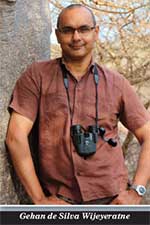 Remarkably, no Sri Lankan marine biologist played any role in publicizing whale watching in the early years. However, soon after, they benefited by being thrust into the media spotlight by film crew researchers who had read the publicity which began with my various widely disseminated articles. Having read them, and sometimes after conversations with me, the film crews and the press came to Sri Lanka and incorporated local marine biologists into their story.
Remarkably, no Sri Lankan marine biologist played any role in publicizing whale watching in the early years. However, soon after, they benefited by being thrust into the media spotlight by film crew researchers who had read the publicity which began with my various widely disseminated articles. Having read them, and sometimes after conversations with me, the film crews and the press came to Sri Lanka and incorporated local marine biologists into their story.
At the time I broke the first story, I do not think any of the local marine biologists had even one image of a Blue Whale of a publishable standard or had any idea that Sri Lanka was the best place in the world to see Blue Whales. Hopefully, the increased profile of local marine biologists has made it easier for them to raise the funds needed for their important research.
Q: Did the Sri Lanka Tourism Promotion Bureau help your efforts with publicity and branding?
A:
Yes indeed. At the start of the publicity campaign, we produced a series of informative and attractive publications designed by Chandrika Maelge. These were printed and distributed at key consumer and travel trade fairs such as the Bird Fair, WTM and Destinations where a number of important press and tour operators were informed about Sri Lanka being a good place for whales. At some of the press drinks events in London hosted by Jetwing Eco Holidays, around 35-45 press people would attend. These events were held in collaboration with the London Office of the SLTPB.
In some years, As many as three of these press events were held allowing personal interaction with a wide pool of media people. Another important and later development is the role played by Nalin Perera who ran the SLTPB office in London for several years and attended many consumer and travel trade fairs. I had developed media briefs for him which he would print and distribute. In one conversation, he estimated that he had printed and distributed over 10,000 copies of this material.
There were others who also disseminated my stories to the international press; a notable example being Chitral Jayatilake who shared my publicity pdfs with various wildlife documentary makers he invited to Sri Lanka.
Q: Did everyone readily embrace your ideas?
It took a couple of years. I remember even into the second year of the publicity campaign there were doubts from the big companies in tourism.
I remember Srilal Miththapala who was then President of The Hotels Association of Sri Lanka speaking to me and joining a celebrity whale watching event I was leading with Shyamalee Tudawe. This was organized by Olivia Richli of the Amangalla in Galle.
Srilal wanted to report back to the association if there was any truth to the claims being made by me about how easy it was to see Blue Whales. On the coastline, the people running small guesthouses readily embraced the story as tourists who were reading my stories turned up with copies of my articles and asked for boats to take them whale watching. The international press also readily took it on as I provided credible data.
Q: What do you say to criticisms that whale watching needs better regulation?
I agree on the need for better regulation and higher standards. The tourism industry has played its part in publicizing whale watching. Other state agencies also need to step up their efforts to regulate the industry in a way that is good for the welfare of the animals and provide a good visitor experience.
Q: What do you expect ‘A Naturalist’s Guide to the Mammals of Sri Lanka’ to achieve?
I would like people to understand that there is still a lot to be discovered about Sri Lanka’s mammals and I hope this portable and affordable guide will find its way into the hands of local naturalists and inspire more research and more practical steps to conserve habitats and species.
Life style
Modern Brides and Grooms collection by LOVI Ceylon and friends

Brides and Grooms of Sri Lanka – Reimagined
“Together we’re creating moments of happiness and cherished memories for the new couple and their families” said Founder and CEO of LOVI Ceylon, Asanka de Mel, as he introduced LOVI Ceylon’s Groom collection. Each groom’s look was paired with extraordinary creations from Sri Lanka’s top bridal designers, jewelers, florists, hair and make-up artiste and was captured by story-telling photographers.
The presentation graciously hosted by the Taj Samudra and Shangri-La hotels saw 30 leading designers working hand in hand to infuse fresh ideas, celebrate cultural diversity and show-off Sri Lankan couture—the island’s hand craft heritage.
The stunning bridal costumes were painstakingly made by renowned designers Messrs. Dhananjaya Bandara, Rishard Raheem, and Michael Wijesuriya as well as Mses. Indi Yapa Abeywardena of Brides by INDI, Sonali Dharmawardena, Darshi Keerthisena of Buddhi Batiks, Ramona Oshini, Sandani Perera of IKIGAI Bridal, and Jaish Parathalingam of Aashkii. The newcomer, Ms. Anusha David also presented her couture creations under the label Gabriel.
“We want our Groom and all of the men in the wedding including the groomsmen, dads, young boys and friends, to be themselves–to feel rooted in culture, well dressed and at ease on the wedding day,” says Asanka. Celebrating the religious and cultural traditions including Buddhist, Christian, Hindu, Kandyan, Malay, Muslim, Sinhala, Tamil and western traditions of the island LOVI Ceylon’s Grooms’ range presented modern sarongs paired with formal shirts, jackets, kurtas and more. They were paired with sarees, dresses, lehengas, pant suits and an array of breathtaking outfits. There were many looks offered for the Sri Lankan diaspora, as well as couples seeking inspiration for destination weddings.
As the designs progressed from sketch to stitching, our jewelry partners Careems, Lalitha, Mallika Hemachandra, Tiesh and Vogue jewelers added their brilliant sparkles with handcrafted fine jewelry made of precious metals encrusted with diamonds, sapphires and rubies. And what wedding would be complete without flowers? Bringing the latest floral creations were florists Designer Flowers, Flowers by Joan and Karen Forbes, Lassana Flora, and Supreme Flora who made the spectacular bridal outfits blossom with their creations.
Breathing life into these wonderful creations with superb hair and make-up was anchor of the shoot, Ms. Nadiya Fernando and her collaborator Omesh, while Ramani Fernando Salons, Shane Perera, Viran Peter, Brides by Leena and Talia designs, also worked magic on the models.
The father son duo Dinuka and Dineth Fonseka of Studio3000 took on the herculean task of capturing all the creations as the anchor photography partner. The works of Ashene Bernard, Amarante Studio, Geeshan Bandara, and Portrait Culture were also presented in imaginative and artistic captures.
De Mel expressed his thanks to the wonderful models who brought the visions and fancies of the designers to life, as well as poet and author Ashok Ferrey for being the MC of the shoot and providing an eloquent commentary, delivered with his inimitable panache!
“We have world class craftsmanship here, it’s fun to work with so many experts, who just happen to be friends, to present a beautiful collection that could nudge the course of Sri Lankan clothing identity” said Asanka when asked about the work that went into this.
As he rightly reminded the gentlemen to choose wisely, “on that special wedding day, when all eyes are on her–her eyes are on you!”









